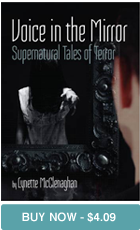Book Review
April 16th, 2014 | Published in Dark Tales, Self Publishing, Writer and Research

The Resurrectionist by James Bradley is described as a “Gothic chiller” and “thrilling horror story” on the back cover, so with this review I will have a look at what makes the book fit such criteria. In particular I will look at Bradley’s writing style, which is powerful and atmospheric and vividly conveys the novel’s themes and concerns.
The main character, Gabriel Swift is living in 1820s London, apprenticed to Edwin Poll, an anatomist. Poll, and others in the story, exemplify science without conscience or morality. Gabriel is a promising student, but in the course of the story he persistently falls prey to the worst aspects of his character. Anatomists need bodies and much of the novel is located in the grim world of the resurrectionists. Chief of these is the malevolent Lucan, who wields a lot of power as the city’s chief body-snatcher. Lucan is a classic character from a Gothic tale. Gabriel is fearful of him, yet drawn to him.
One daunting task for writers of dark fiction is to convincingly depict moments of horror. I recently read a novel where the writer seemed to think that a list of gruesome details such as eating entrails from a steaming corpse was enough to constitute horror. Unfortunately, the effect was about as horrifying as a shopping list. Bradley, however, is a master of the effect. This was, for me, the best aspect of the novel – its powerful, atmospheric writing. Some scenes are viscerally moving. For example, here is part of a depiction of monstrosities preserved in jars: “…a line of larger jars, each holding a child deformed in some dreadful way: one’s head an empty sack which billows on its neck; another made as a mermaid is, its back and legs disappearing into serpent coils; the head of the next turned inside out, the teeth growing in concentric rings through the exposed meat of the palate as if the inverted hole sought to consume the face in which it sits from chin to brow”. This writing is visually arresting and disturbing. Gabriel is a gifted illustrator, so notes what he sees with an artist’s eye; the detached narrative voice takes in, dispassionately, without any sense of straining for effect, the dreadful details, making the writing chilling, the scene grotesquely immoral, an early glimpse into the ghastly world Gabriel is drawn into. It also picks up a key Gothic theme, the nature of monstrousness; and it alludes to the kind of society we see Dickens trenchantly critical of.
The Resurrectionist is a master-class in writing. Bradley is skilled in drawing the reader into an utterly repellent environment by making it both fascinating and appalling.







